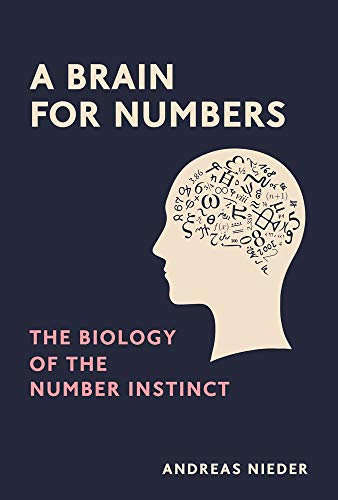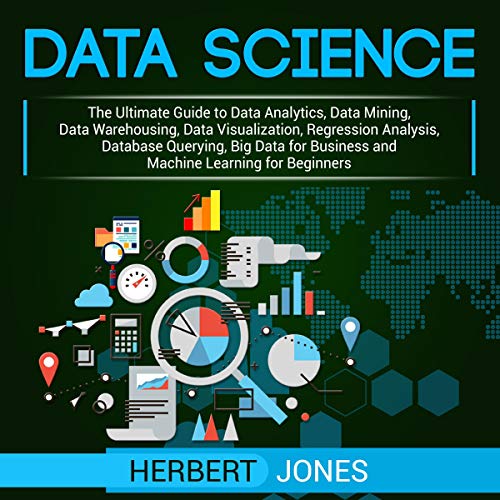Shopping for the best data science john d. kelleher is about as tricky as finding your soulmate. You not only think about quality, price but also need to find where to buy data science john d. kelleher. Don’t worry any more! We spend many hours to review and compare data science john d. kelleher to make the short list for you. Let’s check which product is suitable with you.
Best data science john d. kelleher
1. Data Science (The MIT Press Essential Knowledge series)
Description
A concise introduction to the emerging field of data science, explaining its evolution, relation to machine learning, current uses, data infrastructure issues, and ethical challenges.2. Fundamentals of Machine Learning for Predictive Data Analytics: Algorithms, Worked Examples, and Case Studies (MIT Press)
Feature
Fundamentals of Machine Learning for Predictive Data Analytics Algorithms Worked Examples and Case StudiesDescription
A comprehensive introduction to the most important machine learning approaches used in predictive data analytics, covering both theoretical concepts and practical applications.
Machine learning is often used to build predictive models by extracting patterns from large datasets. These models are used in predictive data analytics applications including price prediction, risk assessment, predicting customer behavior, and document classification. This introductory textbook offers a detailed and focused treatment of the most important machine learning approaches used in predictive data analytics, covering both theoretical concepts and practical applications. Technical and mathematical material is augmented with explanatory worked examples, and case studies illustrate the application of these models in the broader business context.
After discussing the trajectory from data to insight to decision, the book describes four approaches to machine learning: information-based learning, similarity-based learning, probability-based learning, and error-based learning. Each of these approaches is introduced by a nontechnical explanation of the underlying concept, followed by mathematical models and algorithms illustrated by detailed worked examples. Finally, the book considers techniques for evaluating prediction models and offers two case studies that describe specific data analytics projects through each phase of development, from formulating the business problem to implementation of the analytics solution. The book, informed by the authors' many years of teaching machine learning, and working on predictive data analytics projects, is suitable for use by undergraduates in computer science, engineering, mathematics, or statistics; by graduate students in disciplines with applications for predictive data analytics; and as a reference for professionals.
3. A Brain for Numbers: The Biology of the Number Instinct (The MIT Press)
Description
How our intuitive understanding of numbers is deeply rooted in our biology, traceable through both evolution and development.
Humans' understanding of numbers is intuitive. Infants are able to estimate and calculate even before they learn the words for numbers. How have we come to possess this talent for numbers? In A Brain for Numbers, Andreas Nieder explains how our brains process numbers. He reports that numerical competency is deeply rooted in our biological ancestry; it can be traced through both the evolution of our species and the development of our individual minds. It is not, as it has been traditionally explained, based on our ability to use language. We owe our symbolic mathematical skills to the nonsymbolic numerical abilities that we inherited from our ancestors. The principles of mathematics, Nieder tells us, are reflections of the innate dispositions wired into the brain.
Nieder explores how the workings of the brain give rise to numerical competence, tracing flair for numbers to dedicated number neurons in the brain. Drawing on a range of methods including brain imaging techniques, behavioral experiments, and twin studies, he outlines a new, integrated understanding of the talent for numbers. Along the way, he compares the numerical capabilities of humans and animals, and discusses the benefits animals reap from such a capability. He shows how the neurobiological roots of the brain's nonverbal quantification capacity are the evolutionary foundation of more elaborate numerical skills. He discusses how number signs and symbols are represented in the brain; calculation capability and the neuromythology of mathematical genius; the start-up tools for counting and developmental of dyscalculia (a number disorder analogous to the reading disorder dyslexia); and how the brain processes the abstract concept of zero.
4. Data Science from Scratch: First Principles with Python
Feature
Data Science from Scratch First Principles with PythonDescription
Data science libraries, frameworks, modules, and toolkits are great for doing data science, but theyre also a good way to dive into the discipline without actually understanding data science. In this book, youll learn how many of the most fundamental data science tools and algorithms work by implementing them from scratch.
If you have an aptitude for mathematics and some programming skills, author Joel Grus will help you get comfortable with the math and statistics at the core of data science, and with hacking skills you need to get started as a data scientist. Todays messy glut of data holds answers to questions no ones even thought to ask. This book provides you with the know-how to dig those answers out.
- Get a crash course in Python
- Learn the basics of linear algebra, statistics, and probabilityand understand how and when they're used in data science
- Collect, explore, clean, munge, and manipulate data
- Dive into the fundamentals of machine learning
- Implement models such as k-nearest Neighbors, Naive Bayes, linear and logistic regression, decision trees, neural networks, and clustering
- Explore recommender systems, natural language processing, network analysis, MapReduce, and databases
5. Data Science: The Ultimate Guide to Data Analytics, Data Mining, Data Warehousing, Data Visualization, Regression Analysis, Database Querying, Big Data for Business and Machine Learning for Beginners
Description
Do you want to expand your skills from being a basic data scientist to becoming an expert data scientist ready to solve real-world data-centric issues? Exploring this audiobook could be a step in the right direction.
Discover two comprehensive manuscripts in one audiobook:
- Data Science: What the Best Data Scientists Know About Data Analytics, Data Mining, Statistics, Machine Learning, and Big Data - That You Don't
- Data Science for Business: Predictive Modeling, Data Mining, Data Analytics, Data Warehousing, Data Visualization, Regression Analysis, Database Querying, and Machine Learning for Beginners
Part one of this audiobook will cover topics such as:
- What data science is
- What it takes to become an expert in data science
- Best data mining techniques to apply in data
- Data visualization
- Logistic regression
- Data engineering
- Machine learning
- Big data analytics
- And much more!
Part two of this audiobook will discuss the following topics:
- How big data works and why it is so important
- How to do an explorative data analysis
- Working with data mining
- How to mine text to get the data
- Some amazing machine learning algorithms to help with data science
- How to do data modeling
- Data visualization
- How to use data science to help your business grow
- Tips to help you get started with data science
- And much, much more!
So listen to this audiobook now if you want to learn more about data science!
6. Deep Learning (MIT Press Essential Knowledge series)
Description
An accessible introduction to the artificial intelligence technology that enables computer vision, speech recognition, machine translation, and driverless cars.
Deep learning is an artificial intelligence technology that enables computer vision, speech recognition in mobile phones, machine translation, AI games, driverless cars, and other applications. When we use consumer products from Google, Microsoft, Facebook, Apple, or Baidu, we are often interacting with a deep learning system. In this volume in the MIT Press Essential Knowledge series, computer scientist John Kelleher offers an accessible and concise but comprehensive introduction to the fundamental technology at the heart of the artificial intelligence revolution.
Kelleher explains that deep learning enables data-driven decisions by identifying and extracting patterns from large datasets; its ability to learn from complex data makes deep learning ideally suited to take advantage of the rapid growth in big data and computational power. Kelleher also explains some of the basic concepts in deep learning, presents a history of advances in the field, and discusses the current state of the art. He describes the most important deep learning architectures, including autoencoders, recurrent neural networks, and long short-term networks, as well as such recent developments as Generative Adversarial Networks and capsule networks. He also provides a comprehensive (and comprehensible) introduction to the two fundamental algorithms in deep learning: gradient descent and backpropagation. Finally, Kelleher considers the future of deep learningmajor trends, possible developments, and significant challenges.








